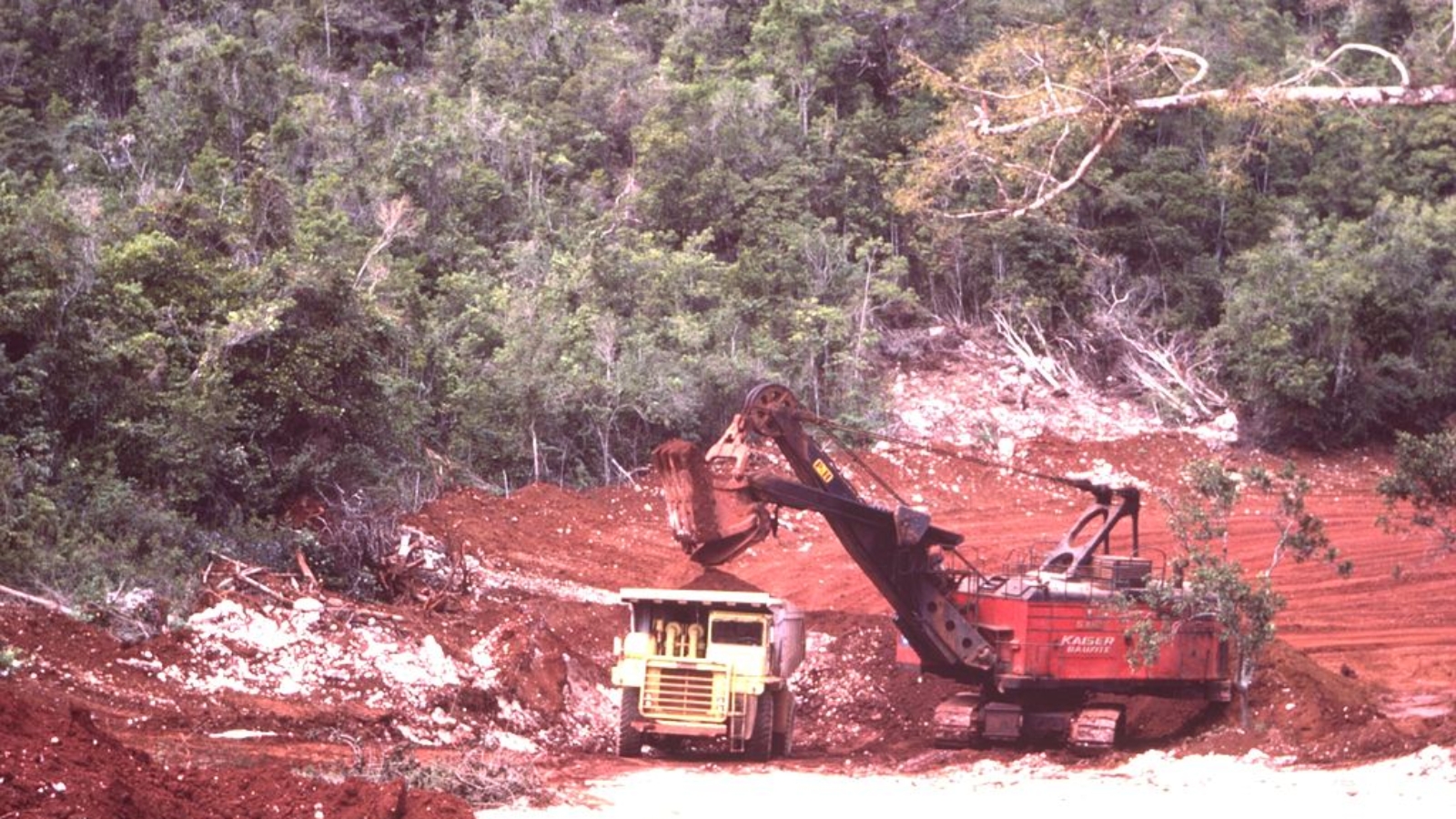By Craig Moran
The dust clings to curtains, cars, and children’s feet in villages near the mines. As Malaysia’s barely restrained bauxite mining industry presses on at a record pace — largely to satisfy the hungry Chinese market and its intensive production of aluminum — the clouds of red dust that are the byproduct of unregulated bauxite mining and lax transportation standards loom through desperate communities. But Malaysian officials have consistently dragged their feet in regulating this lucrative industry, and Malaysians are growing increasingly tired of waiting for them to enforce measures to protect their health, quality of life, and environmental future.
So many mines started operating in such a short time window, following neighboring Indonesia’s ban on the exports of raw materials, that officials have in fact revoked nearly three dozen mining permits in the hopes of wrestling some control over bauxite mine operators. But their efforts fall woefully short as citizens continue to struggle with respiratory issues, skin inflammation, and other complications from the contamination of air quality and water supplies due to the negligent waste management procedures of illegal miners. What’s both tragic and ironic about Malaysia’s bauxite industry is that safe, well-regulated bauxite mining is vital for the production of aluminum, generally prized as one of the most sustainable non-ferrous metals.
In effect, global markets have been seeking more bauxite because the final product, aluminum, is considered more environmentally friendly and energy efficient than steel. Vehicles made from lightweight aluminum use far less energy (up to 32 percent less, according to one study) and have the potential to dramatically impact carbon emissions as the world seeks solutions to climate change that depend on reduced greenhouse gases. Additionally, aluminum is one of the most recyclable materials, as 95 percent of the energy used to make it stays in the end product and it can be reused over and over again.
But the dissonance between the sustainability values that aluminum represents and the scarring of the Malaysian landscape — and poisoning of its people — isn’t lost on the villages that the bauxite transport trucks rumble through day and night. In the port town of Kuantan, the stream of toxins in the rivers and sea include mercury, arsenic, and radioactive uranium that affect fish destined for consumption as well as people.
Advocates seek health, environmental protections
Across the Pahang province, where much of Malaysia’s unfettered bauxite mining is concentrated, the citizens have taken to social media in the hopes of being heard. They’ve posted before-and-after photos of the landscape that have stunned those who know the natural beauty and biodiversity of Malaysia, and find the damage almost inconceivable. They’ve displayed their cars and their curtains, coated in thick layers of red — and they’ve demanded that the government take action before it becomes too late.
Whether Malaysian officials can be trusted to act in the interests of their citizens remains in doubt. Alarmed Kuantan residents were told by Department of Environment officials that water quality tests near the mines found samples were safe and free of hazardous materials. Independent testing found the opposite: heavy metals were present, as were the early stages of radioactive contamination — but rivers of rusty, orange-red water continue to flow and the damage caused by illegal bauxite miners grows.
So does the alarm of environmentalists and public health officials advocating on behalf of people before profits. Among them is Dr. Maketab Mohamed, former president of the Malaysian Nature Society, who demands that those who are blindly disregarding environmental regulations be held accountable for corporate practices that place Malaysian citizens at risk and hold the nation captive to their interests.
When the boom goes bust
Yet the hard truth is that bauxite mining has been a real boon to the Malaysian economy. The short-term potential is far beyond what some industry analysts initially estimated, and there’s no meaningful compromise on the horizon because Malaysia’s regulatory reach is overwhelmed by the mining boom.
This year, bauxite mining has delivered USD $176 million to its operators, even as Malaysian officials struggle to collect the royalties due the government for permitting big-business bauxite mining. The business may be bigger than anyone really knows, because current production and export figures are easily more than double the initial projections that Malaysian bauxite exports would reach 10 million tons in 2015. Asian Metal discovered that just three companies were on track to export 12 million tons in 2015, and a fourth estimate — from the CEO of Top International Holding — put the firm’s production at 18 million tons.
“The implication is frightening,” concludes environmental news portal Clean Malaysia. “Who really knows how much bauxite is being produced and how much pollution and environmental damage is taking place as a result of such aggressive mining?” If long-term damage from poorly regulated bauxite mining in Vietnam is any indication — or even new projections that Malaysian bauxite reserves will be used up in just five years, in an eerie echo of its toxic history with tin — the Malaysian government needs to protect its people and environment starting today.
*****
*****
Craig Moran is a contributor to Fair Observer and an independent analyst.
[Image courtesy Wikimedia Commons]
